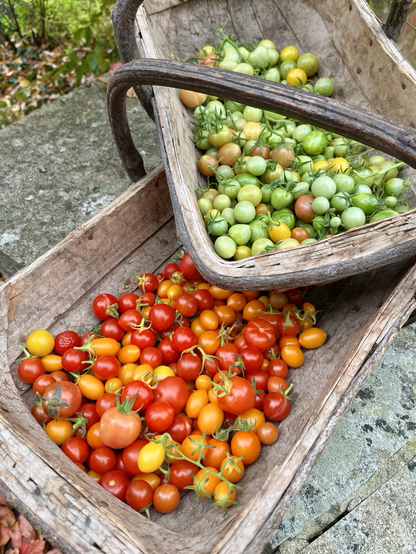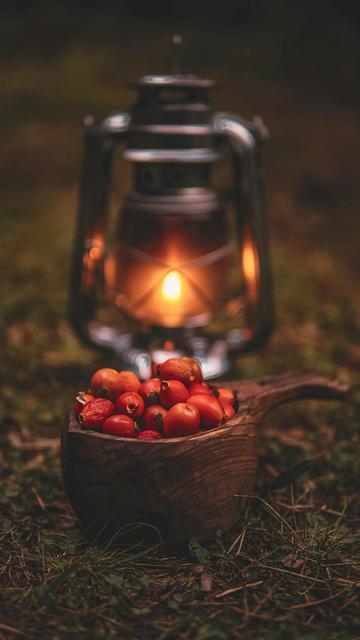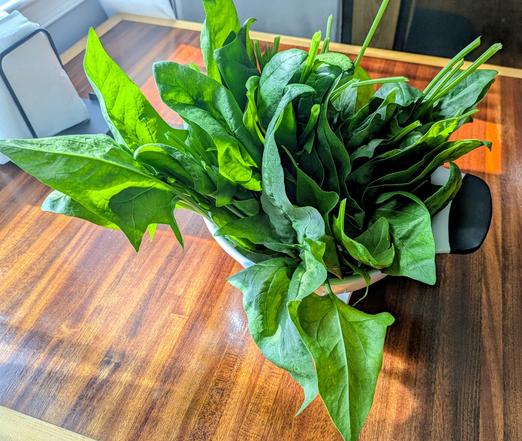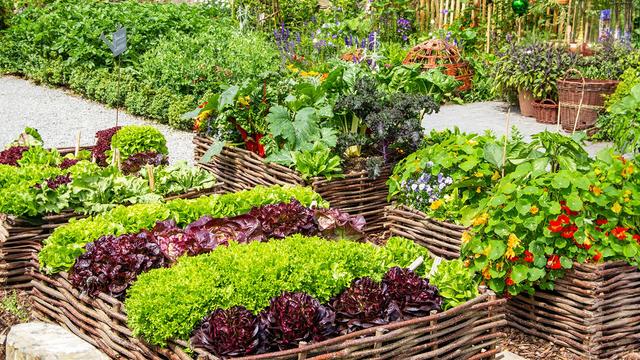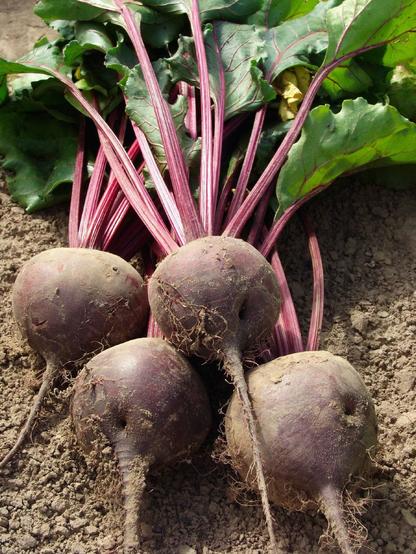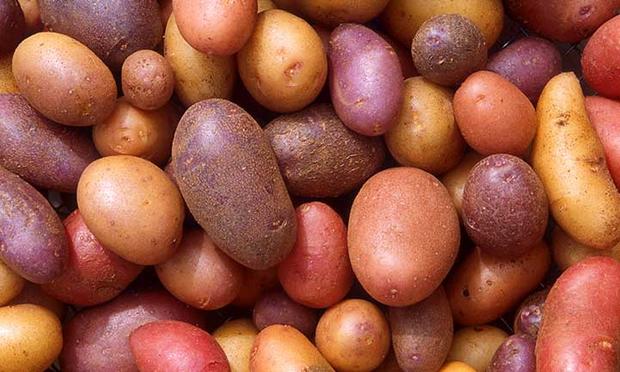So next year, I think I'll try the straw method with my potatoes. I had a decent crop -- way better than last year (the first year I tried growing them). "Planting in straw makes it easy to harvest a few new potatoes without killing the plant. Lift up the straw layer, remove a few baby potatoes directly under the straw, and then replace the straw layer."
Harvesting Potatoes: How to Know When Your Potatoes Are Ready
Harvesting potatoes is a tricky task, since they're underground. This is your ultimate guide to knowing exactly when to dig your taters up.
Written by Sarah Jay Last updated: July 23, 2024
Excerpt:
9 Potato Harvesting Tips
"Here are a few quick tips to help your potato harvesting:
- Harvest tubers at any size. Potatoes harvested before they mature are called new potatoes. New potatoes cannot be stored but must be used right away.
- As potatoes mature, their skins harden. The skin of a new potato will easily peel off when rubbed.
- A potato plant will produce 3 to 6 regular-size potatoes and a number of small ones.
- Use a spading fork to dig up potatoes. Lift potatoes gently to avoid bruising or damaging the skins. Use your fingers to harvest potatoes if need be.
- Potatoes can be left in the ground past maturity until the first frost, but they are most nutritious if harvested when they mature.
- Protect harvested potatoes from sunlight; those exposed to light will become green potatoes and produce a bitter chemical compound called solanine.
- Cure potatoes before storing them. Curing will harden the skins for storage. Set tubers in a single layer in a dark place at 50°F to 60°F for two weeks to cure.
- Store them at about 40°F
- Save the best tubers to plant potatoes next season. Don’t save potatoes that are soft or discolored. Don’t save potatoes if any of the potato plants are diseased.
Storing Potatoes
Store potatoes in a cool, dry place. Don’t wash potatoes before storing them because moisture speeds up spoilage. When stored between 45°F – 50°F, potatoes will stay fresh for several weeks. When stored at room temperature, potatoes are at their best quality for about one week.
Do not try to store tubers that are bruised or injured from digging. Use these potatoes right away.
Do not store raw potatoes in the refrigerator because the potato starch will most likely change to sugar in this too cold environment. Refrigerated potatoes will show excessive browning during cooking (especially when frying) and will have an undesirable sweet taste.
Do not store potatoes close to fruit. Ripening apples and other fruit give off ethylene, a plant hormone that will stimulate potatoes to sprout prematurely.
Do not store potatoes where they will be exposed to light. Potato tubers are, botanically speaking, a modified stem. Exposure to light will cause tubers that are dormant to wake up, turn green, and begin to sprout and grow. This green color comes from the plant pigment chlorophyll.
Along with the 'greening' of the potato, a compound called solanine forms. Solanine is one of the compounds that give potatoes their taste, but in excess amounts, this substance can be toxic. Avoid eating the green skin—simply cut off and discard the green parts of the potato. The rest of the potato will be fine."
Full article:
https://www.epicgardening.com/harvesting-potatoes/
#SolarPunkSunday #GrowYourOwnFood #GrowYourOwn #HarvestingPotatoes #GrowingPotatoes
